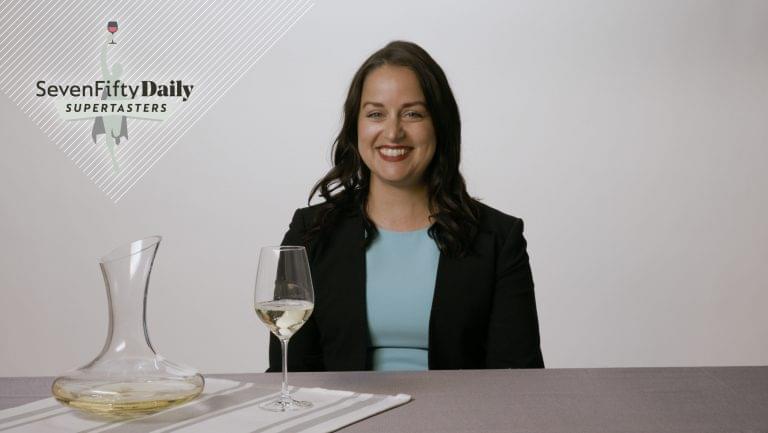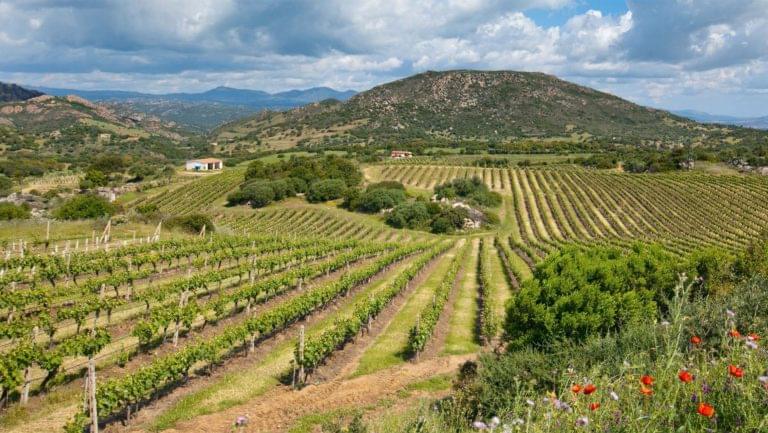This advertising content was produced in collaboration with our sponsor Loire Valley Wines; it does not necessarily reflect the views of SevenFifty Daily’s editorial team. For more information, please refer to our ethics guidelines.
Sabra Lewis is a sommelier and wine consultant based in New York City. She originally moved to New York to pursue a career in dance and quickly landed a spot as a Radio City Rockette, a place she held for three years before moving on to perform in Broadway shows. It was a trip to Tuscany in 2004 that sparked her interest in wine, which eventually became a second career. Lewis earned an advanced certificate from the Wine & Spirit Education Trust in 2011 and has since worked in wine service at a number of New York’s acclaimed restaurants and wine bars, including Rouge Tomate, The NoMad, Terroir, and L’Atelier de Joël Robuchon. Most recently, until May 2019, Lewis was the wine director at The Standard, High Line.
Here, Lewis tastes a wine from our sponsor Loire Valley Wines. The Loire Valley is made up of five distinct wine regions—from east to west, they are Pays Nantais, Anjou, Saumur, Touraine, and the Centre-Loire. Each of these regions possesses its own characteristic grapes, appellations, and wine styles. The Loire’s offerings run the gamut from reds, rosés, and whites to still and sparkling wines, and comprise dry, semidry, and sweet wines. Known for their moderate alcohol levels, Loire wines also offer bright acidity and flinty minerality, making them ideal for pairing with an array of cuisines. Among France’s many wine-growing territories, the Loire Valley leads with its white AOC wines, including its AOC sparkling wines (excluding Champagne)—and ranks second for AOC rosés.
The Loire River is France’s longest, flowing 1,000 kilometers through the region, from Mont Gerbier de Jonc in Ardèche to the Atlantic Ocean off the coast of Brittany. The river and its tributaries play an important role in climate fluctuation, contributing to diverse terroir throughout the Loire Valley. Microclimates are common and highly favorable to the cultivation of various grape varieties, including Chenin Blanc, Sauvignon Blanc, and Melon de Bourgogne, as well as Pinot Noir, Cabernet Franc, and Gamay. There are 57,200 hectares of vineyards along the river’s banks, with 51 appellations of origin and 4 indication géographique protégée zones—and more than 4,000 wineries. The region as a whole exports 68 million bottles every year to 157 export markets. The U.S. is the Loire’s largest export market in terms of both value and volume. In recognition of all the contributions of the region to both French and global culture, the Loire Valley—from Sully-sur-Loire to Chalonnes-sur-Loire—was added to UNESCO’s World Heritage list in 2000.

Don’t miss the latest drinks industry news and insights. Sign up for our award-winning newsletters and get insider intel, resources, and trends delivered to your inbox every week.
The wine Lewis tastes in this video is from Vouvray, a subzone of the Touraine region. The appellation runs east from the eastern border of the city of Tours through seven communes on the right bank of the Loire River and along the Brenne tributary. Vouvray’s climate is primarily continental, with some moderating maritime influence from the Atlantic Ocean. There are approximately 2,210 hectares under vine in Vouvray, and nearly all are Chenin Blanc, though a small amount of Orbois (up to 5 percent of total production) is also grown in the area. In addition to premium-quality dry white wines, which are made every year, the Vouvray terroir is ideal for producing demi-sec, sweet, and sparkling wines, though variations in weather and vintage affect when these wines may be produced.
Vouvray’s annual production over the last five years has been 105,800 hectoliters, with approximately 43,900 hectoliters of still white wine and 61,900 hectoliters of sparkling, including both mousseux and pétillant styles. Bright citrus, stone fruit, and floral notes, along with lively acidity, are hallmarks of Vouvray. These wines also tend to have strong aging potential—often up to 10 years, during which they develop candied apricot and quince flavors as well as luscious honey notes.

Dispatch
Sign up for our award-winning newsletter
Don’t miss the latest drinks industry news and insights—delivered to your inbox every week.







